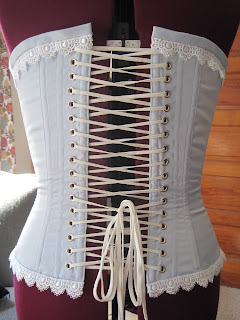It's been a while since I read a purely non-fiction piece of work and this one had me intrigued just from the title alone - Queen Victoria's Gene: Haemophilia and the Royal Family.
 |
| Amazon.com |
The authors, D.M. Potts and W.T.W. Potts, set forward their research and ideas in the book about where this gene could have come from. Was it a 1 in 50,000 chance mutation, or was Victoria herself possibly the illegitimate offspring between the Duchess of Kent and a Hemophiliac man? The research is impeccable, and scientific proof helps to back up any of the theories they put forward.
The let down for me in reading this was based on the synopsis on the back cover, the authors were going to explore the possibilities of how history might have been different if the Hemophilia gene had not been prevalent in the royal families, specifically the Romanovs of Russia. In each of the history chapters though, they reiterate the historical facts, then relegate the alternative outcomes to only a few short paragraphs.
Exploration and investigation into other historical mysteries like the identity of Anna Anderson, the supposed lost Grand Duchess Anastasia, help to round out a the author's research on how Hemophilia could also help in identifying those who were related and what their roles could potentially mean.
The material itself isn't too dry, despite being rooted in historical and scientific facts mostly. It's the theories and the material that is put forward that drive book (excluding one chapter that just didn't make sense to me on why it was included). Although I know a number of things about Queen Victoria's family, there were still a few surprises (Kaiser Wilhelm and his wife are both great-grandchildren of the Duchess of Kent and therefore cousins), and definitely a few more questions to ponder.
Overall rating - 3.5 out of 5




















